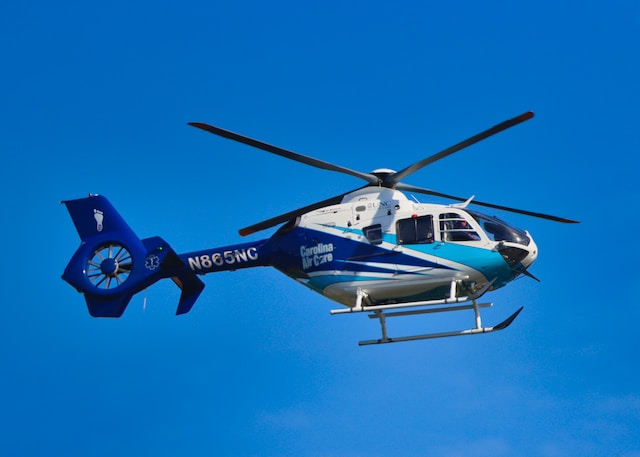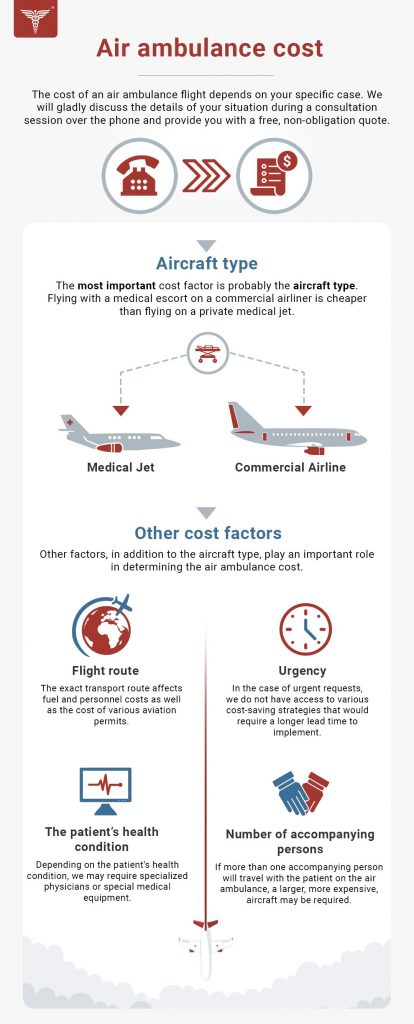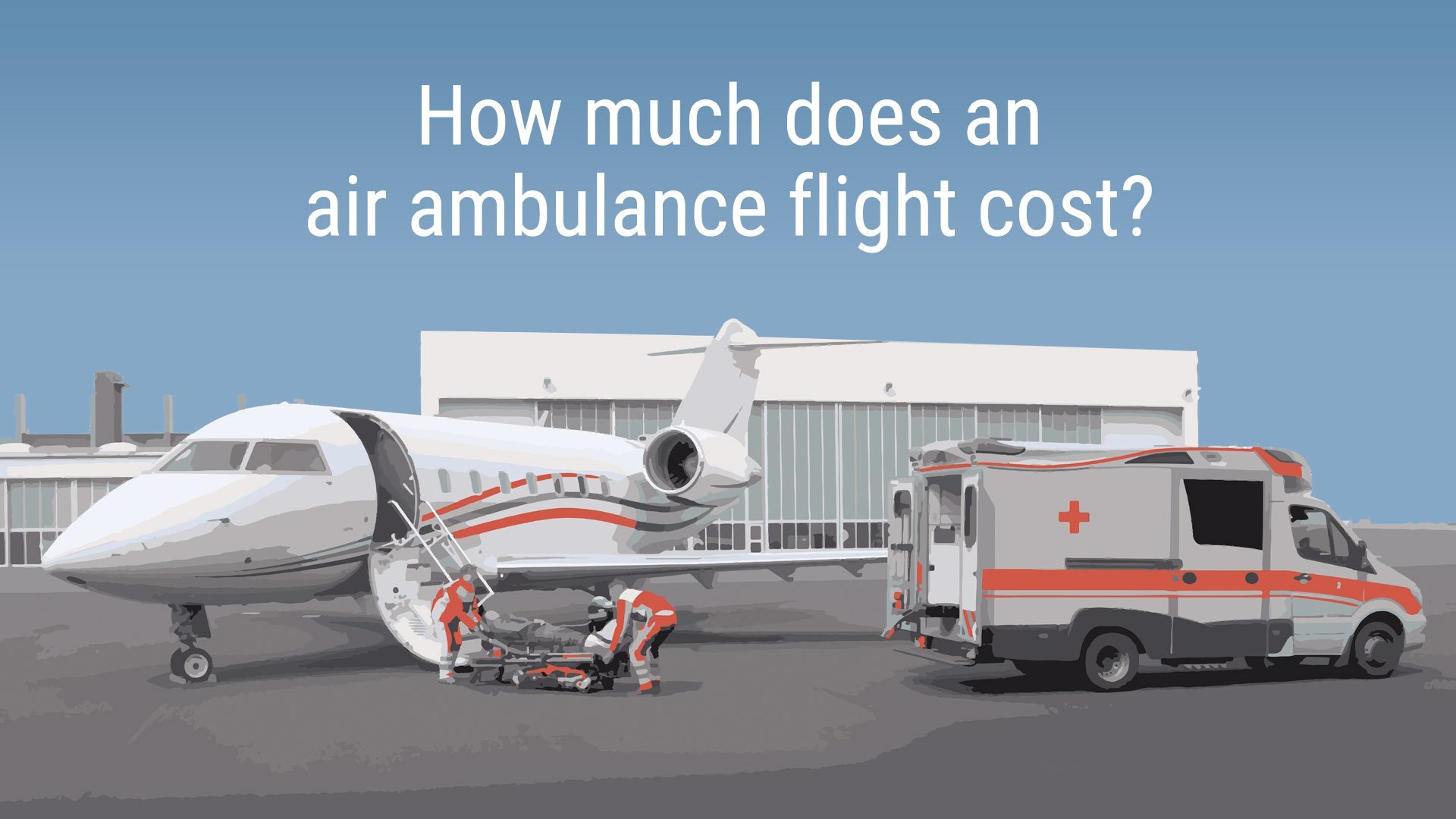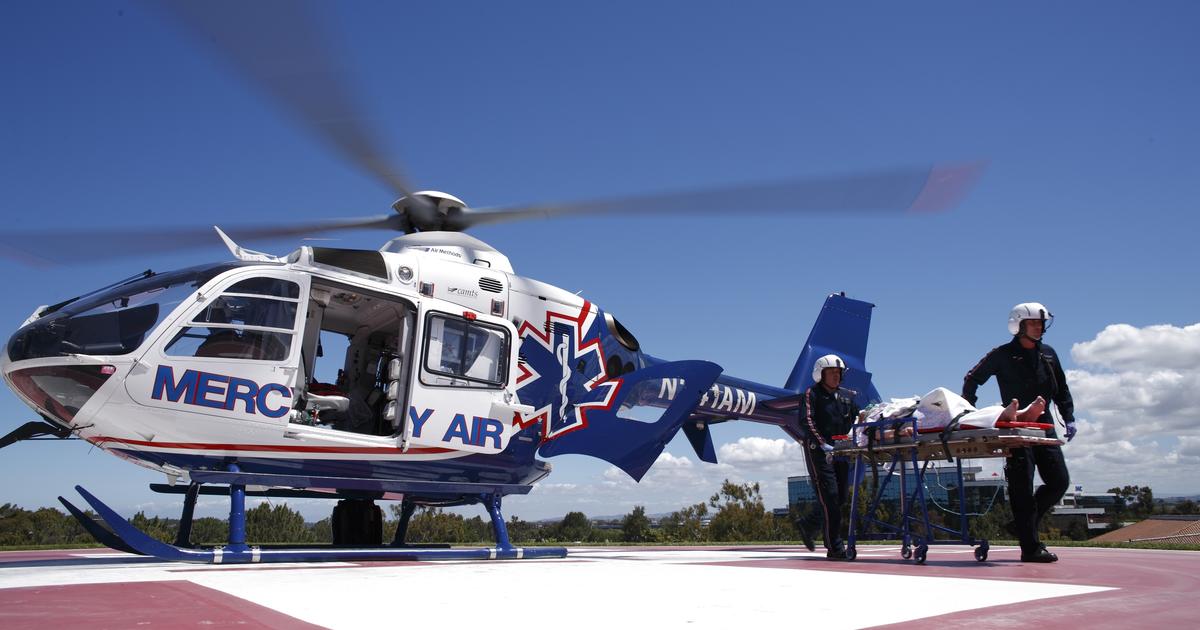So you’ve probably heard about air ambulances before, right? They’re these amazing medical helicopters that swoop in to rescue people in critical condition and transport them to specialized hospitals for life-saving treatment. It’s pretty impressive stuff. But have you ever wondered about the cost behind these life-saving flights? Well, buckle up because we’re about to dive into the world of air ambulance costs and unravel the factors that contribute to the price of saving lives. Trust me, it’s a topic worth exploring.
Factors Affecting Air Ambulance Costs
When it comes to air ambulance services, there are several factors that can impact the costs involved. It’s important to understand these factors in order to have a clear understanding of what to expect when considering air ambulance transportation. Here, we will explore some of the key factors that can influence the cost of air ambulance services.
Distance
The distance to be covered is one of the primary factors that can affect the cost of an air ambulance service. Naturally, longer distances will require more fuel and more flight time, which can increase the overall cost. Additionally, the availability of suitable airports or landing sites along the route may also play a role in determining the cost.
Aircraft Type
Another factor that can impact air ambulance costs is the type of aircraft used. There are two main types of air ambulances: fixed-wing and rotor-wing. Fixed-wing air ambulances, which are typically airplanes, are more suitable for long-distance transfers, while rotor-wing air ambulances, commonly known as helicopters, are better suited for short-distance transfers or areas with limited access. The choice of aircraft can impact the cost of the service.
Services and Equipment
The range of services and equipment provided during an air ambulance transfer can also affect the cost. Some air ambulances may offer advanced medical equipment, such as ventilators or cardiac monitors, which can impact the overall cost. Additionally, the availability of specialized medical staff and their level of expertise can also contribute to the cost of the service.
Medical Staff
The medical staff involved in an air ambulance transfer can vary depending on individual patient needs. The presence of specialized medical professionals, such as doctors or nurses, can increase the cost of the service. The level of medical care required, such as basic life support or advanced life support, can also influence the overall cost.
Fuel Costs
Fuel costs are a significant factor in the overall cost of air ambulance services. The price of fuel can vary depending on the location and fluctuations in global oil prices. Since air ambulances rely on fuel for their operations, any changes in fuel costs can directly impact the cost of the service.
Landing and Handling Fees
Airports and landing sites often charge fees for the use of their facilities and services. These landing and handling fees can vary depending on the location and the specific services required. The cost of these fees is often passed on to the patient or the patient’s insurance provider, which can contribute to the overall cost of the air ambulance service.
Insurance
Insurance coverage is an important consideration when it comes to air ambulance costs. Different insurance plans may offer varying levels of coverage for air ambulance services. It’s important to check with your insurance provider to understand what expenses will be covered and what you may be responsible for.
Maintenance and Upkeep
Maintaining and operating air ambulances requires regular maintenance and upkeep to ensure the aircraft’s safety and performance. These maintenance costs can add to the overall expense of the air ambulance service.
Operational Expenses
Air ambulance providers have various operational expenses to cover, such as staffing, training, and administrative costs. These expenses are factored into the cost of the service provided.
Administrative Costs
Behind the scenes, there are administrative costs involved in coordinating and organizing an air ambulance transfer. These costs can include things like medical records coordination, obtaining necessary authorizations, and ensuring compliance with regulations. Administrative costs are an important consideration in the overall cost of air ambulance services.
Types of Air Ambulance Services
When it comes to air ambulance services, there are two main types: fixed-wing air ambulances and rotor-wing air ambulances. Each type has its own advantages and considerations.
Fixed-Wing Air Ambulance
Fixed-wing air ambulances are typically airplanes specially equipped and staffed to provide medical transportation. These air ambulances are suitable for long-distance transfers, such as intercontinental or cross-country journeys. Fixed-wing air ambulances often have advanced medical equipment and can accommodate patients with various medical needs.
Rotor-Wing Air Ambulance
Rotor-wing air ambulances, commonly known as helicopters, are a more agile and versatile option for air medical transportation. These air ambulances are typically used for short-distance transfers, such as hospital-to-hospital transfers within a city or region. Rotor-wing air ambulances can provide quick response times and access to locations with limited ground transportation access.
Comparison of Air Ambulance Costs
When considering air ambulance services, it’s important to understand the factors that can contribute to regional differences in costs. Additionally, the type of healthcare system, whether it is public or private, can influence the cost of air ambulance services. Let’s explore some of these points further.
Regional Differences
Air ambulance costs can vary significantly from one region to another. Factors such as local regulations, airport fees, and fuel prices can all impact the cost of air ambulance services in different areas. It’s important to research and compare costs in your specific region to get a better understanding of the expenses involved.
Healthcare System
The type of healthcare system in a particular country or region can also affect the cost of air ambulance services. In countries with publicly funded healthcare systems, the cost may be partially or fully covered by the government. In countries with private healthcare systems, the cost may be borne by the patient or their insurance provider. Understanding the healthcare system in your area is essential when considering air ambulance costs.
Private vs. Public Providers
In addition to the healthcare system, the type of air ambulance provider can also impact the cost. Private air ambulance providers may have higher fees compared to those provided by public or non-profit organizations. It’s important to consider the reputation and credentials of the air ambulance provider when comparing costs.
Membership Programs
Some air ambulance companies offer membership programs to help individuals and families mitigate the costs of air medical transportation. These membership programs typically involve an annual fee and provide coverage for air ambulance services. It’s important to review the terms and conditions of membership programs to determine if they are a viable option for your needs.
Hidden Costs and Additional Charges
While the base cost of air ambulance services is an important consideration, it’s also essential to be aware of potential hidden costs and additional charges that may arise. Here are some common examples:
Extra Medical Personnel
If additional medical personnel, such as a specialized doctor or nurse, are required for the patient’s condition, this may result in additional charges.
Advanced Life Support
Advanced life support measures, such as intubation or IV medication administration, may incur additional fees due to the specialized equipment and expertise needed.
Ground Ambulance Transportation
In some cases, ground ambulance transportation may be necessary to transfer the patient to or from the air ambulance. These ground ambulance costs should be taken into account when considering the overall expense.
Bedside-to-Bedside Service
Air ambulance services often provide bedside-to-bedside service, which means they transport the patient from their current location to the receiving facility. This comprehensive service may result in higher costs compared to a point-to-point transfer.
Additional Miles or Flight Time
If the air ambulance needs to travel additional miles or spend more time in the air due to factors such as weather conditions or the location of suitable landing sites, this may lead to additional charges.
It’s important to discuss and clarify any potential hidden costs and additional charges with the air ambulance provider before confirming the service. This can help avoid any surprises when it comes to the final bill.

Insurance Coverage for Air Ambulance
Understanding insurance coverage for air ambulance services is crucial, as it can significantly impact the out-of-pocket expenses for patients. Here are some common insurance options to consider:
Medicare and Medicaid
Medicare and Medicaid are government-funded healthcare programs in the United States that provide coverage for certain medical services, including air ambulance transportation. However, it’s important to note that coverage may vary, and specific requirements must be met to qualify.
Private Health Insurance
Private health insurance plans often offer coverage for air ambulance services, but the extent of coverage can vary depending on the plan. It’s important to review the terms and conditions of your insurance plan and contact your insurance provider to understand the coverage available for air ambulance services.
Travel Insurance
If you are traveling internationally or planning a trip that involves air ambulance transportation, it may be wise to consider travel insurance. Travel insurance policies often provide coverage for medical emergencies, including air ambulance services. Be sure to verify the specific coverage details with the travel insurance provider.
Membership Programs
As mentioned earlier, certain air ambulance companies offer membership programs that provide coverage for air ambulance services. These programs typically involve an annual fee and can be an option to consider for those who want to ensure they have coverage in case of an emergency.
When it comes to insurance coverage for air ambulance services, it’s important to thoroughly understand the terms and conditions of your insurance plan. Consulting with your insurance provider and reviewing your policy can help you determine the extent of coverage and any potential out-of-pocket expenses.
Navigating the Billing Process
Dealing with medical billing can be an overwhelming process, especially when it comes to air ambulance services. Here are some tips for navigating the billing process:
Understanding Charges and Codes
Take the time to understand the charges and codes associated with air ambulance services. Request an itemized bill from the air ambulance provider and review it carefully. If you have any questions or concerns, don’t hesitate to reach out to the provider for clarification.
Negotiating with Insurers
If you receive a bill that you believe is too high or unreasonable, it may be worth negotiating with your insurance provider. Contact them to discuss your concerns and provide any supporting documentation that may help in the negotiation process. Be persistent and advocate for yourself to ensure a fair outcome.
Appealing Denied Claims
If your insurance provider denies coverage for air ambulance services, you have the right to appeal their decision. Gather any relevant medical records or supporting documentation that can strengthen your case. Follow the appeals process outlined by your insurance provider and be prepared to provide additional information if requested.
Seeking Financial Assistance
If you find yourself facing significant out-of-pocket expenses for air ambulance services, it may be worth exploring financial assistance options. Some air ambulance providers or charitable organizations may offer financial assistance programs to help individuals or families in need. Research these programs and reach out to organizations to inquire about possible assistance.
Avoiding Fraudulent Billing Practices
Be aware of potential fraudulent billing practices in the air ambulance industry. If you receive a bill that seems suspicious or inflated, consult with a medical billing advocate or an attorney who specializes in healthcare billing. They can provide guidance and help you navigate any potential fraudulent billing issues.
Navigating the billing process for air ambulance services can be challenging, but with careful attention to detail and persistence, you can ensure a fair and accurate billing outcome.

Financial Considerations and Options
When it comes to paying for air ambulance services, there are several financial considerations and options to explore. Here are some options to help manage the costs:
Out-of-Pocket Expenses
If you are faced with out-of-pocket expenses for air ambulance services, consider setting up a payment plan with the air ambulance provider. Many providers offer flexible payment options to help ease the financial burden. Discuss your options with the provider and work out a payment plan that fits within your budget.
Crowdfunding and Fundraising
In cases where the cost of air ambulance services is prohibitive, crowdfunding and fundraising can be an effective way to raise funds. Utilize online platforms and social media channels to spread the word about your fundraising campaign. Friends, family, and even strangers who empathize with your situation may be willing to contribute to the cause.
Medical Loans and Financing
Medical loans and financing options can be explored for individuals who need assistance in covering the cost of air ambulance services. Research reputable lenders who specialize in medical loans and carefully review the terms and conditions before committing to any loan or financing arrangement.
Personal Injury Lawsuits
If the need for air ambulance services arises as a result of a personal injury caused by the negligence of another party, it may be worth considering a personal injury lawsuit. Consult with a personal injury attorney to determine if you have a valid case and explore the possibility of seeking compensation for the cost of air ambulance services.
Each individual’s financial situation is unique, and it’s important to carefully consider the available options and choose the one that best suits your needs.
Alternative Options to Air Ambulance
While air ambulance services are invaluable in certain situations, there may be alternative options to consider depending on the circumstances. Here are a few alternatives to air ambulance services:
Ground Ambulance
For shorter distances or situations where time is not critical, ground ambulance transportation may be a suitable alternative to air ambulance services. Ground ambulances are equipped with medical personnel and equipment to provide transportation to medical facilities.
Commercial Medical Escorts
In cases where a patient is stable but requires medical assistance during commercial air travel, commercial medical escorts can provide support. These escorts are trained medical professionals who accompany patients on commercial flights and provide any necessary medical care.
Charitable Medical Flights
Charitable organizations and foundations may offer medical flights for individuals in need. These flights are often provided at no cost or a reduced cost and are typically coordinated through the organization’s network of volunteers and supporters.
Airline Stretcher Services
Some commercial airlines offer stretcher services for patients who are unable to sit upright during air travel. These services provide a more cost-effective option for patients who do not require specialized medical care during transportation.
When assessing alternatives to air ambulance services, it’s important to consider the patient’s medical condition, urgency of transportation, and financial constraints. Consulting with medical professionals and exploring the available options can help determine the most appropriate alternative.

Advocacy for Affordable Air Ambulance Services
Access to affordable air ambulance services is crucial in emergencies, and advocacy plays an important role in driving positive changes in the industry. Here are a few key avenues for advocacy:
Legislation and Regulation
Advocacy efforts can focus on influencing legislation and regulations surrounding air ambulance services. This can include advocating for price transparency, reasonable billing practices, and regulations that promote affordability and quality of care.
Public Awareness and Education
Increasing public awareness about the cost of air ambulance services and the importance of insurance coverage can help drive demand for more affordable options. Education initiatives can also focus on helping individuals understand their rights and options when it comes to air ambulance transportation.
Charitable Organizations and Foundations
Charitable organizations and foundations dedicated to improving access to air ambulance services can play a vital role in advocacy efforts. These organizations can raise funds, provide support to individuals in need, and work towards policy changes that prioritize affordable air ambulance services.
By working collectively and raising awareness about the need for affordable air ambulance services, advocacy efforts can contribute to positive change in the industry.
Conclusion
Understanding the factors that impact air ambulance costs, the types of services available, insurance coverage options, billing processes, and alternative options is crucial for anyone considering or in need of air ambulance transportation. By diving deep into each aspect, we hope to have provided you with comprehensive information that will help you navigate this complex field. Remember, when it comes to air ambulance services, knowledge is power, and being informed can help you make the best decisions for you or your loved ones in times of medical emergencies.



